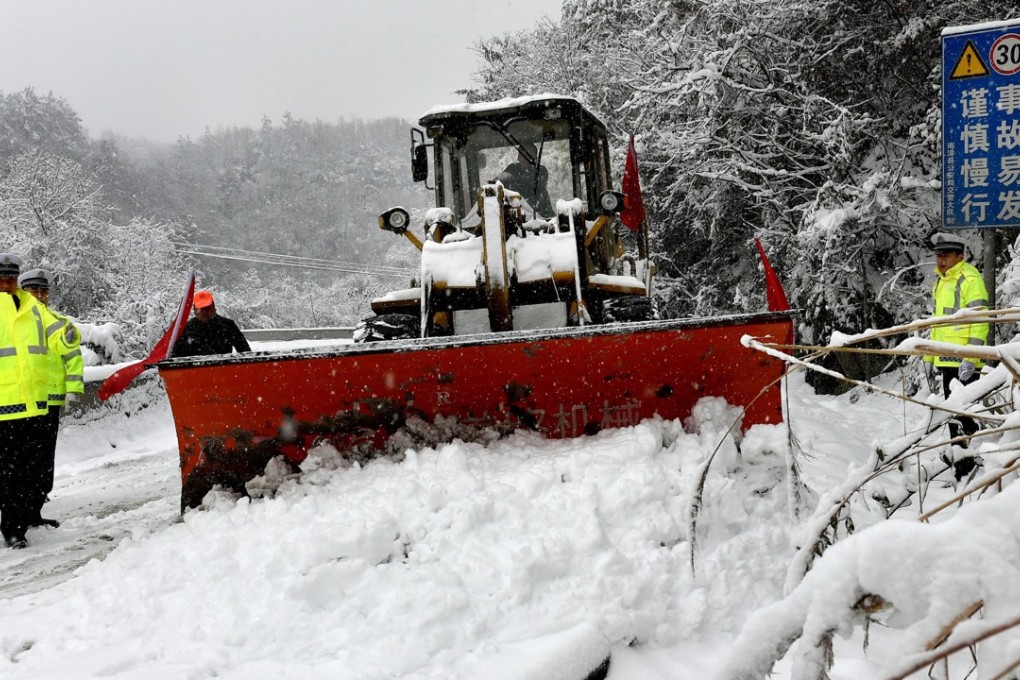10 dead as blizzards take heavy toll on central China
Snowfalls force closure of airports, roads and high-speed train services, and squeeze already short supplies of heating gas

Blizzards in central China have killed at least 10 people and affected more than 560,000 others this week, with eight people dead in Anhui province alone, the Ministry of Civil Affairs said on Friday.
Shanxi, Henan, Hubei, Anhui and Jiangsu are the worst-hit provinces, with the storms inflicting an estimated 510 million yuan (US$78.6 million) in economic losses since Tuesday, according to ministry figures.
Up to 410mm of snow blanketed parts of Henan, Hubei and Anhui provinces.
The blizzards forced closure of expressways, high-speed train services and airports in many affected areas, and destroyed about 200 homes.
They also interrupted deliveries of fuel, from thermal and coking coal to liquefied natural gas, traders and shipping sources said.